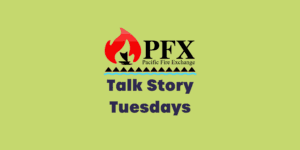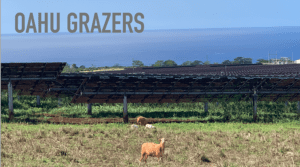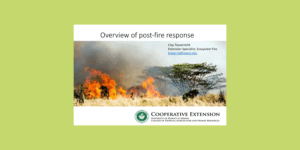Prioritizing Stakeholder Needs
We passionately believe that working with and understanding the communities, land owners, fire fighters, natural and cultural resources stewards and those affected by fire is our highest priority in identifying the gaps in fire science.
In 2014, key knowledge and technology needs for Pacific Islands fire practitioners emerged which aligned with Joint Fire Science Program goals and the National Cohesive Strategy for Wildland Fire Management.

Current Wildfire Stakeholder Priorities
PFX continues its work on priorities such as pre- and after fire management and response, prevention and education, and understanding drivers of wildfire. We also constantly adjust, refine and offer new fire science products based on our deep engagement and commitment to those affected by wildfire. We are proud to say that we are in constant contact with our end-users through the co-development, review and delivery of wildfire science.
Growing Our Wildfire Community
PFX continuously aims to grow the diversity and breadth of membership of those seeking knowledge about fire in the Pacific.
Seeking New Ways to Connect With You
PFX is committed to timely and responsive wildfire science delivery that attracts new members not only through our fact sheets and webinars, but also through oral histories (Partner Perspectives), remote/hybrid meetings and workshops, social media and new forms of communication.
Do You Have a Great Idea You'd Like to Pursue?
Recent Resources for Practitioners
In this Pacific Fire Exchange talk story Q&A session, we speak with Dr. Clay Trauernicht and Dr. Alyssa Anderson, University of Hawai`i at Mānoa about wildfire in Hawai`i in the context of Hawaiian language newspapers as well as the historical landscape changes of the 20th century.
In this Pacific Fire Exchange talk story Q&A session, we round up the latest research, past and present for managers and landowners wanting to understand more about how our four-legged friends (goats, sheep, cows, etc.) if managed properly can help reduce blazing and wildland fire. This month’s science share out and conversation was with Dr. Clay Trauernicht, University of Hawai`i at Mānoa Ecosystems and Fire Specialist; Raia Olsen of O‘ahu Grazers and Dr. Elliott Parsons, formerly with the Department of Land and Natural Resources. They presented the how-tos on hiring island professional grazers and lessons learned for contract grazing.
A slide presentation overview by Dr. Clay Trauernicht of best practices for assessing and mitigating after-fire impacts to the environment.



